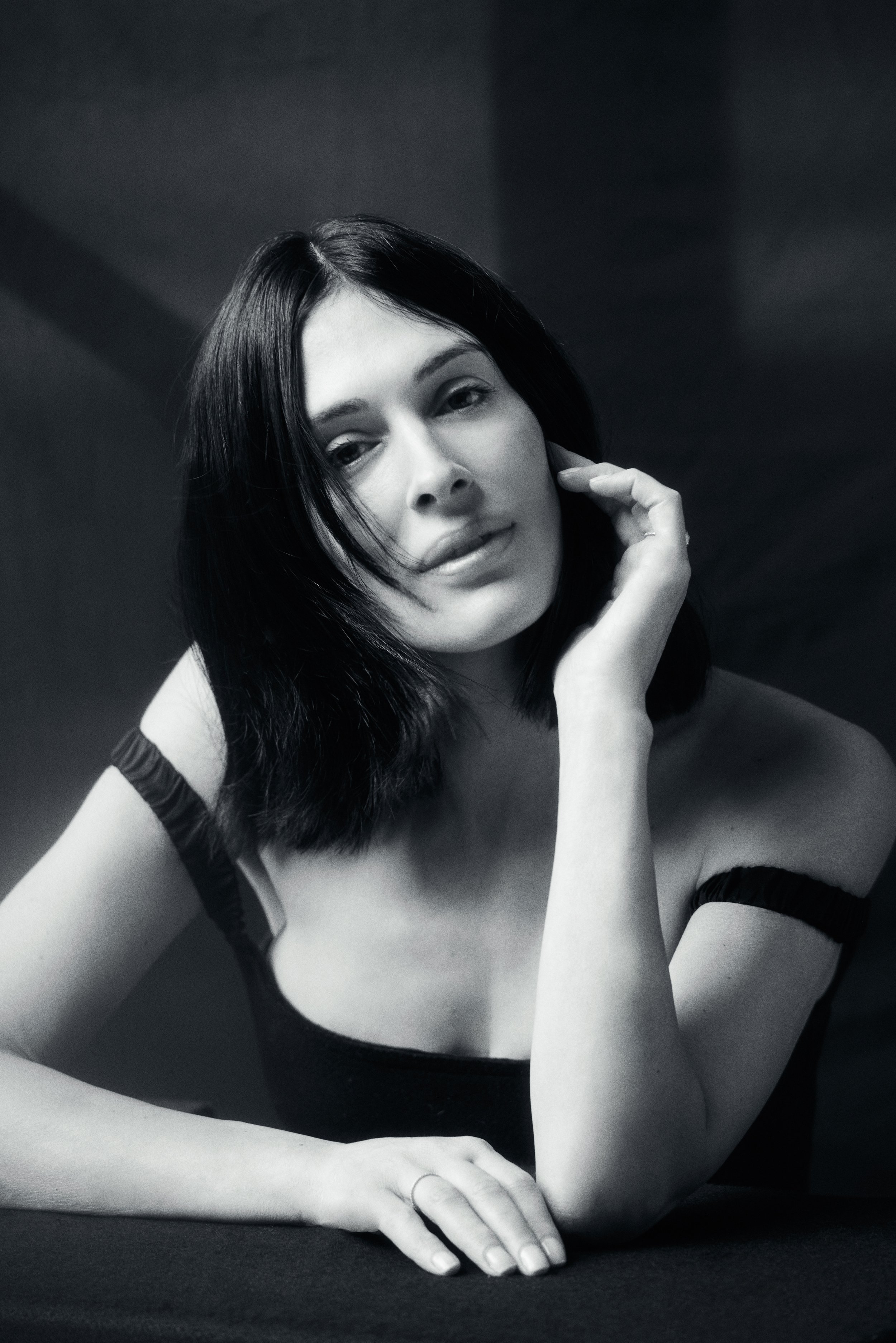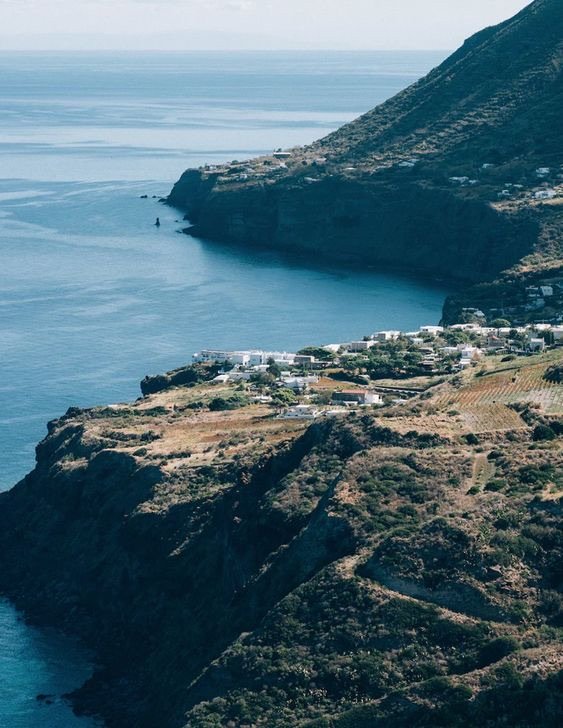Athena Calderone
Photography by Philipp Paulus
HURS CURATORS
ATHENA CALDERONE
The multidisciplinary creative shares her favorite brands, products and places
At the intersection of design, food and style, there are few figures that stand out the way Athena Calderone does. The epitome of a multihyphenate, Calderone has applied her aesthetic to everything from interiors to products to cook books. As the founder of multidisciplinary creative studio Studio Athena Calderone, she collaborates with renowned design brands, designs standout interiors and has published two highly praised books. Over the years, she’s garnered a loyal following of those who appreciate her distinct taste and philosophy of merging function and style. Calderone is also the founder behind multimedia brand EyeSwoon, covering food and design as well as offering a curated edit of homeware products. Through her relentless attention to beauty, Calderone has built an empire that blurs the line between disciplines. And with it shifting the wider cultural narrative on what a personal brand can look like.
Photography by William Jess Laird
A RUG COLLECTION SHAPED BY ART DECO
For her second collection with Beni Rugs, Athena Calderone explored the timeless historical motifs of Viennese Art Deco design. It was the move to her new apartment that inspired the interior designer and founder to dive into numerous European design movements. From French Art Deco to the Vienna Secession. Muted tones of amber, deep red and gray are paired with geometric patterns in contrasting colors inspired by the glass ceiling of the MAK museum, Parisian window frames and a pen and ink drawing by Josef Hoffman. All pieces are crafted by hand to order from heritage quality wool in the brand’s headquarters in the Moroccan countryside. In line with Beni Rugs’ philosophy of connecting traditional craftsmanship with modern design, the 13-piece collection reads both classic yet contemporary. Creating an aesthetic that feels familiar yet new. Further deepening the story behind the designs, the collection was captured in the Paris apartment of Auguste Perret, a French architect and a pioneer of the architectural use of reinforced concrete.
“There’s never a moment in my existence as a designer that I am not looking at the angular lines found in architecture to inform my interiors and product design. Inspiration can be found anywhere and everywhere, but it is especially present as I’m traveling and observing the historical details of a façade, a window frame, a gate, or a doorway. Moving into my TriBeCa apartment prompted a deep fascination and obsessive inquiry into Art Deco. Suddenly, I found myself drawn to the streamlined yet sumptuous geometry and patterns of the period, in particular French and Viennese Art Deco design from the early to mid-1900s. One building in particular, a pen and ink drawing by Josef Hoffman became the catalyst and the first spark of inspiration that sent me on my way to designing my new Beni Rugs collection, Salon. In a full circle moment, the collection was captured in August Perret's home—the same architect who designed the façade that inspired the Salon collection. I loved the balance of the raw and the refined and utilitarian approach to materiality in this home. The beautiful warmth of wood was counterbalanced by raw concrete columns that were wrapped in brass at the ceiling.”
“I have been smitten with the architectural work of Piero Portaluppi for quite some time (it likely began on my first visit to Villa Necchi about seven years ago) but more recently I have studied his interiors and use of materials in a more granular way. With the recent purchase of my TriBeCa home—Thierry Despont’s former residence that is both preserved and echoes the Art Deco period in design with its wood paneling and perfectly rigid datum line—I have begun to educate my eye as I explore the 1930s work of Porteluppi. On my most recent visit to Milan, I had the opportunity to visit two other iconic Portaluppi spaces that have very much inspired the design details and use of materials in my apartment. I could lose myself in the art alone at The Boschi Di Stefano House Museum with room after room of 20th-century Italian art and sculpture, including an expansive collection of Lucio Fontana and Giorgio Morandi. Much of the Boschi family collection was acquired through personal relationships with the artists. But beyond the exceptional art, it was the use of materiality I honed in on while perusing the museum.”
AN ARCHITECT WHO PAIRED THE CLASSICS WITH MODERNITY
After the doors to the renowned historic residence Villa Necchi Campiglio in Milan reopened in 2008, a reappraisal of the work of its designer followed. As one of the key figures of Italian 20th century architecture Piero Portaluppi was key to the transformation of Milan, building over a 100 buildings in the city between 1910 and the 1960s. His distinctive style – seamlessly balancing restrictiveness and playfulness, elegance and modernity is found in luxury villas, offices, hotels and museums across the city. Starting his career in 1912 working for influential architect Ettore Conti, Portaluppi created power plants for Edison – Europe’s most powerful energy company – before designing work for the public and private sectors. Known for his love of green bow ties and convertibles, Portaluppi was the architect of choice for the Milanese aristocracy. While Portaluppi’s work has been long overlooked, today his designs – including Villa Necchi and Casa Museo Boschi Di Stefano are amongst the most celebrated pieces of architecture of our time.
A HAVEN FOR CULINARY ENTHUSIASTS
E. Dehillerin has been at the center of the Parisian culinary scene for over a hundred years. The 190-year-old kitchen supply store on the rue Coquilliere is often filled with restaurateurs, students from the famous Cordon Blue cooking school and other culinary enthusiasts – including Julia Child. While the store is best known for its outstanding copper cookware – the store has a wide selection of professional-grade saute pans, stew pots, roasting pans and more – E. Dehillerin stocks anything a professional or stay-at-home-cook might need. The green façade with bright yellow lettering might not seem like much at first glance, but this is one of those places where you forget a sense of time and place. The store's narrow aisles and cluttered shelves ask for a sense of curiosity and a readiness to explore. But we promise it will be worth it.
“No matter where I travel in the world, I always love to take something home that tells a story of where I’ve been—usually it’s something I engage with either in my kitchen or on my table. Every piece we collect is imbued with a memory, a story, an energy. The place I love most to peruse and acquire tools for my kitchen is E Dehillerin in Paris. I love getting lost in the aisles of this legendary shop and to explore some of the most simple yet classic utilitarian pieces that improve my culinary skills as I prepare a meal. I love everything about this store, particularly the timeworn wood shelving that is perfectly frayed at the edges with the most basic organization system — for instance, the black markings on the interior of the item number for the various-sized whisks. Walking in the footsteps of culinary legends who shopped here too — like Julia Childs and Anthony Bourdain — hits home for me. Like me, they each found their own success in the art of food later in life — in their late 30s and early 40s. Their path justifies my own somehow and their choices in these aisles alongside mine somehow reinforce what I love so much about the community I found through food.”
“This is where my NYC life began. It was my first job and first experience with art, culture and fashion so I couldn’t curate this list without touching upon one of the iconic spaces in NYC that helped shape who I am today. I moved to NYC in the mid-90s where fashion, art, culture, nightlife, dance music, and drag queens were at the center of my world. At 20 years old, I was immediately embraced by the seminal nightclubs of the time – The Limelight, The Tunnel, and The Palladium. Indochine was – and still is – the chicest, sexiest restaurant in all of Manhattan in my opinion. There is always a mix of fashion, art world regulars, models, gays, photographers, drag queens, amazing food, lighting, music and florals. Beyond the overall fabulousness of the people I encountered, I personally came alive in that space, it transformed my life, helped me to discover myself in so many ways. When I began baking, it was the raspberry tart at Indo I was trying to emulate. I began studying acting while working at Indo. I got engaged when working at Indo. I even DJ’d for the Indochine book launch and 25-year anniversary. And in the craziest turn of events, I went into labor at Indochine on Valentine’s Day 2003.”
IN NEW YORK, A RESTAURANT WITH TIMELESS GLAMOUR
The renowned restaurant on 430 Lafayette Street, isn’t the kind of place you just go to eat. The combination of its tropical décor, crowd-pleasing menu and those who eat there, has made Indochine into the timeless institution it is today. A favorite with New Yorkers and global citizens since opening its doors in 1984, Indochine has that je ne sais quoi attitude that’s hard to replicate. In the 1980s, Indochine was at the center of culture. Madonna, Baquiat and Fran Leibowitz were regulars. Where many of these types of places lose its relevance, Indochine has been able to hold on to its cachet. Today, the restaurant is still frequented by models, artists, musicians and designers and is often the place of choice for luxury brands to host extravagant dinners and parties. Simply put, a classic.
MEDITERRANEAN SIMPLICITY AT ITS BEST
Located off the coast of northeastern Sicily, lie the Aeolian Islands – named after Aeolus, the mythical rule of winds. Many believe the archipelago is one of Italy’s greatest natural and cultural treasures, and is often referred to as the pearl of the Mediterranean. The seven islands on the tip of Italy’s toe – Lipari, Vulcano, Salina, Panarea, Stromboli, Filicudi and Alicudi – were formed by volcanic eruptions over time, creating a dynamic landscape. Known for its rustic charm, this is the kind of destination for those who find luxury in simplicity. From hikes in nature, to swimming in the crystal-clear ocean, to enjoying local cuisine, in the Aeolian Islands life is simple and time moves at a slower pace.















